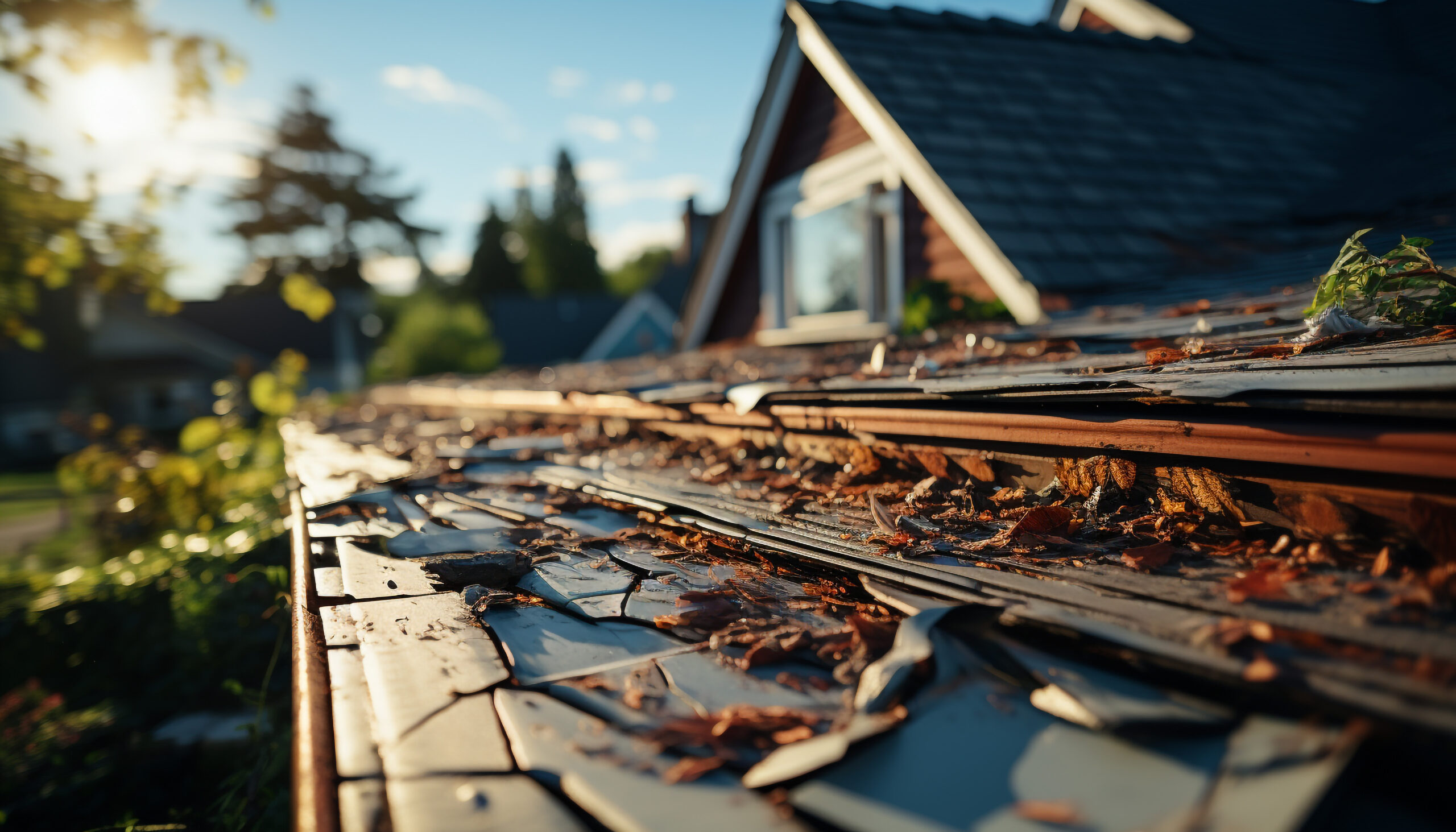Storms can wreak havoc on homes, and your roof often bears the brunt of the damage. High winds, hail, heavy rain, and debris can all compromise the structural integrity of your roof. If you suspect roof damage after a storm, taking swift action is essential to protect your home and avoid costly repairs down the line. Here’s a step-by-step guide on what to do if you think your roof has been damaged.
-
Ensure Your Safety First
Before inspecting for damage, make sure it is safe to do so. If there are downed power lines, severe flooding, or other hazards, stay indoors and wait for authorities to clear the area. Only proceed with a visual inspection if you are confident there is no immediate danger.
-
Conduct a Visual Inspection From the Ground
While it might be tempting to climb onto your roof for a closer look, it’s safer to perform a ground-level inspection first. Using binoculars or a camera with zoom can help you see more details without risking injury.
Look for the following signs of damage:
– Missing or torn shingles or tiles
– Visible dents, cracks, or punctures in roofing materials
– Debris such as branches or metal lodged in the roof
– Sagging areas or visible structural issues
– Damage to flashing, gutters, or downspouts
If you spot any of these issues, it’s likely that your roof has sustained damage and will need professional attention.
-
Check Inside Your Home for Signs of Roof Damage
Even if your roof looks intact from the outside, there may still be hidden damage. Go inside your home and inspect your attic and ceilings for signs of water intrusion or structural issues.
Common signs of internal damage include:
– Water stains on ceilings or walls
– Leaks or dripping water
– Damp insulation or waterlogged materials
– Mold or mildew growth
– Sunlight visible through the roof (in the attic)
These issues indicate that your roof may have been compromised, and further inspection is necessary.
-
Document the Damage
If you suspect roof damage, take photographs and videos of both the exterior and interior issues. Documenting the damage thoroughly is crucial for insurance claims. Be sure to capture different angles and close-ups of problem areas, including missing shingles, dents, leaks, and any debris that may have contributed to the damage.
-
Contact a Licensed Roofing Professional for an Inspection
While a visual inspection can give you an idea of potential damage, it’s essential to call a licensed roofing contractor to assess the extent of the damage. A professional inspection can uncover hidden issues that may not be visible from the ground or inside your home. They have the expertise and equipment to evaluate your roof safely and recommend the best course of action.
What to expect from a professional inspection:
– Detailed assessment of all roof components, including shingles, flashing, vents, and gutters.
– Identification of hidden or underlying damage that may not be immediately visible.
– Recommendations for repair or replacement and an estimate of associated costs.
-
Contact Your Insurance Company
If your roof has been damaged by a storm, you’ll want to notify your homeowners’ insurance company as soon as possible. Provide them with your documentation, including photos, videos, and any reports or estimates from roofing professionals.
Tips for dealing with insurance claims:
– Understand your coverage: Review your policy to understand what is covered and any deductibles that apply.
– Be proactive: Promptly reporting damage can speed up the claims process and help prevent further deterioration of your roof.
– Work with reputable contractors: Insurance companies may provide a list of approved contractors, but you have the right to choose a licensed roofing professional you trust.
-
Make Temporary Repairs, If Safe to Do So
To prevent further damage while you wait for professional repairs, you can make temporary fixes. Cover leaks with tarps or plastic sheeting and secure loose shingles with adhesive or fasteners if you feel comfortable doing so. However, safety is paramount—never attempt repairs if conditions are hazardous.
-
Avoid Roofing Scams
Unfortunately, storm damage often attracts unscrupulous “storm chasers” who prey on vulnerable homeowners. Be wary of anyone offering to repair your roof at a deeply discounted price or demanding payment upfront. Verify the contractor’s credentials, read reviews, and get multiple quotes before proceeding with repairs.
-
Schedule Permanent Repairs Promptly
Once your insurance claim is approved and you’ve chosen a reputable contractor, schedule permanent repairs as soon as possible. Prompt action can prevent further damage, such as water intrusion, mold growth, or structural weakening.
Key Takeaway: Quick Action Prevents Costly Damage
If you suspect roof damage after a storm, acting quickly can make all the difference. Begin with a visual inspection, document the damage, contact a licensed roofing professional, and work with your insurance company to ensure prompt repairs. By taking these steps, you’ll protect your home and minimize the risk of further issues down the line.
Storm damage can be stressful, but knowing what to do can help you navigate the process with confidence and keep your home safe from future storms. Stay prepared, stay proactive, and ensure your roof is ready to weather whatever nature throws its way.

